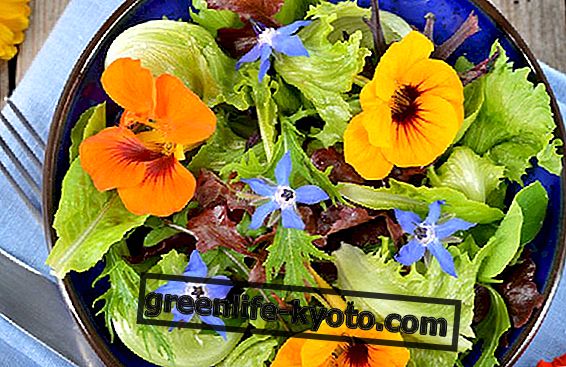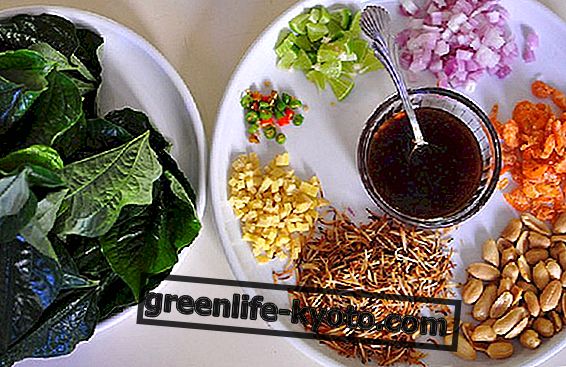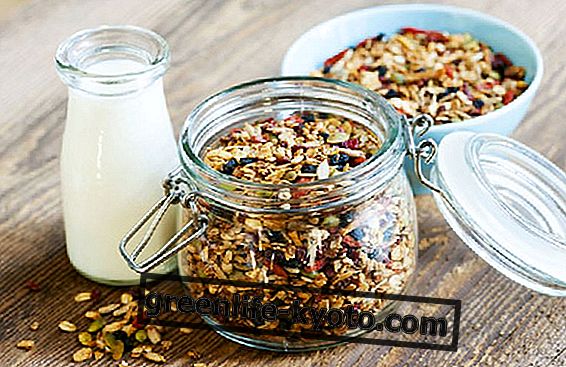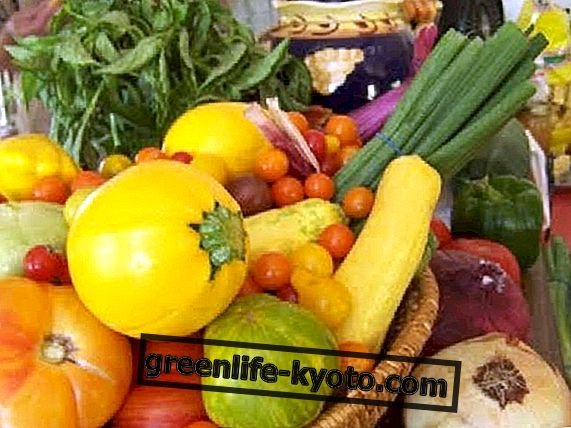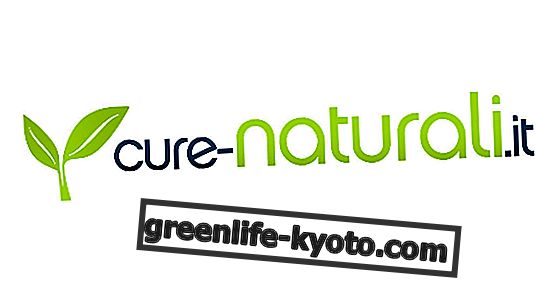The chestnuts, fruits of cultivated chestnut trees, are rich in starch and potassium . Very interesting from a nutritional point of view, they are the basis of a great variety of preparations. Let's find out better.
>
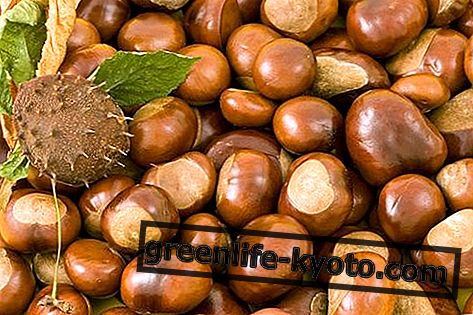
Plant description and variety
The European chestnut ( Castanea sativa ) is a long-lived tree, belonging to the family of the Fagacea (the same to which the beech and oaks belong) and is widespread in all the countries that overlook the Mediterranean basin, where it has long been cultivated.
It is one of the most representative plants of the Italian Apennines, where it occupies almost 10% of the forest area which amounts to about seven million hectares.
Until a few decades ago, the fruit of the chestnut was the main, if not the only, food for mountain people for many months of the year. Not for nothing this majestic plant was called " bread tree " precisely because from its fruits (both fresh and dried) could be prepared for the whole year such a variety of dishes to make the same wheat envy.
The chestnut was not only a food but provided much more like wood for furniture, for carpentry and for small handicraft objects or the tannin used to color the fabrics or for the tanning of the skins or, again, the leaves of the undergrowth used to "prepare the bed" for the animals in the stable.
There are two different cultivars of Castanea sativa :
- chestnuts are the fruit of the tree that grows spontaneously, are smaller in size and very variable in shape, with a dark and homogeneous skin and a sweet but often astringent taste;
- the chestnuts come from cultivated trees and are always improved with successive grafts, they are of large size and little variable shape, oval and elongated. The skin is thin and light brown with noticeable streaks. The taste is very sweet.
In 1996 the Mugello brown obtained the important IGP recognition from the EC (Protected Geographical Indication).
Properties, calories and nutritional values of chestnuts
Chestnuts are nutritious and digestible fruits that meet the current needs of consumers oriented towards natural and genuine foods because they provide biologically active substances that are fundamental for a healthy diet.
Its good energy value ( 100 g of fresh chestnuts bring about 160 Kcal ) is not due to a high content of fats that are present in small quantities but of carbohydrates, in particular starches that make up about 50% of the dry product and also make this particularly digestible fruit.
Of course this energy value is high if you think of fresh fruit but it is still lower than the calories made from 100 g of nuts, hazelnuts, almonds or other dried fruit (about 600 Kcal). Furthermore, unlike dried fruit, chestnuts supply energy that is readily available : the high level of complex carbohydrates makes them, in fact, more similar to wheat and rice. They are therefore today defined as " the cereal that grows on trees ".
Very high is the potassium content (more than 10% RDA, recommended daily dose) and also other mineral salts such as magnesium, calcium, iron and phosphorus. Potassium plays an essential role in various vital functions including nerve conduction and exchanges across cell membranes, favoring efficient muscle contraction and a normal heart rhythm. The importance of potassium for the proper functioning of the cardiovascular and neuromuscular systems makes chestnuts a food suitable for those who practice physical activity .
Another important feature is the low content of another mineral, sodium, which must be introduced in small quantities because its excessive intake can lead to water retention and hypertension.
Chestnuts also contain antioxidants belonging to the vitamin E family, together with a high content of polyphenols: both these classes of compounds are fundamental for the prevention of phenomena linked to aging being natural antioxidants, " radical scavengers " (free radical scavengers) .
The nutrient content can vary significantly following the production process: in boiled chestnuts there is an increase in humidity followed by a decrease of about 25% in the energy value, the starch content decreases and potassium and magnesium losses occur, while proteins, lipids and sucrose change little. In roasted chestnuts the humidity is lowered by 20% and the available sugar content and the energy value increase by 25% (200 Kcal), with drying the protein and carbohydrate content increases, reaching values of 60 g / 100g of edible part.
The flour content is very indicative of the fiber content (14.2%) with a prevalence of the insoluble amount and with the energetic value reaching 343 Kcal / 100g.
Chestnut and brown, allies of
Due to the richness in carbohydrates these fruits have energetic properties and are therefore very effective in physical and intellectual weaknesses, for those who are subjected to stress or practice sports, while they are not recommended for diabetic patients .
Furthermore, chestnuts have also been re-evaluated as a possible raw material for making baby products since sugars are an alternative food for children allergic to cow's milk or lactose.
The good supply of fiber is also important, essential for a healthy and careful diet. 100 g of chestnuts or fresh browns provide about 1/4 of the recommended introduction of fiber in the adult (30 g per day), considered very important for the favorable action on intestinal mobility, on the microflora and on the reduction of cholesterolemia.
The lipid content, unlike most nuts, is not high but their quality is very good (source of essential fatty acids). There are few “bad” saturated fats and many “good” unsaturated fats ( omega-3 and omega-6 ) that play an important role in the prevention of cardiovascular diseases, reduce cholesterol concentration, act at the cell membrane level, regulate the transport of lipids in the blood, promote the development of the retina in children.
Among the vitamins we find good amounts of phytic acid, equal to 50 mg / 100g; it is a substance that seems to have a cholesterol-lowering effect. There are also quantities of pantothenic acid that enters the composition of coenzyme A, a key molecule in the metabolism of proteins, lipids and glucides.
Brown, how can it be consumed?
Even today, chestnut fruits are very interesting from a nutritional point of view and are the basis of a great variety of preparations (from simple boiled or roasted fruit to preserves, from castagnaccio to marrons glacés ...).
The round and velvety brown flour, also called sweet flour, is rich in carbohydrates (starch and simple sugars) and in this it is similar to wheat flour. However, being gluten-free, it cannot be used alone for bread making or pasta preparation: it must be mixed with at least 1/3 of wheat flour to have good cohesion. However, the absence of gluten makes it an interesting alternative for the diet of coeliacs .
To get an idea of the great variety of use of chestnuts we can mention among the many products on the market: jams, chestnut creams, liqueur fruits, syrup, chestnut flour noodles, baked cookies and even chestnut flakes for the breakfast.
Among the innovative proposals: natural pre-cooked chestnuts, natural purée to be used in confectionery, grappa, liqueurs and fruits in spirit.



